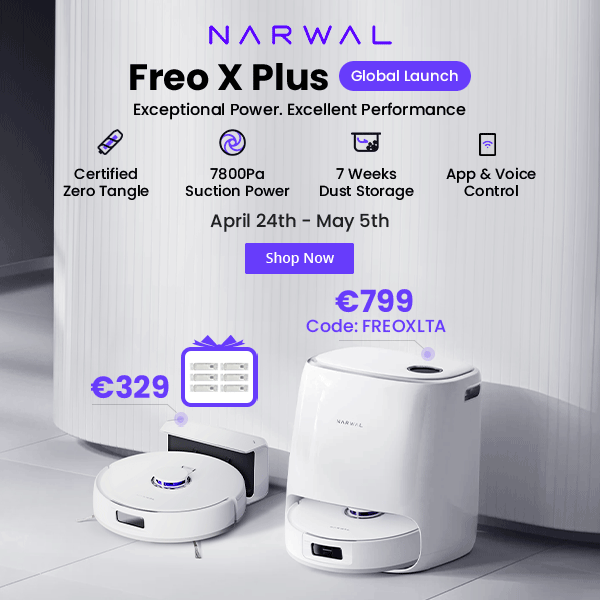ペースの速い現代生活で, ポータブル発電所は、私たちの不可欠なエネルギーパートナーになりました. アウトドアアドベンチャーの場合, 緊急事態, または毎日の家庭生活, 高品質のポータブル発電所は、安定した信頼性の高い電力サポートを提供できます. この記事では、ニーズに最適なポータブル発電所を選択するのに役立つ詳細な購入ガイドを提供します.
目的と要件を決定します
まず最初に, ポータブル発電所を購入する主な目的を明確にする. キャンプや釣りなどの屋外アクティビティのためですか, 家の停電のバックアップ電源として, または医療機器などの専門機器をサポートするため? さまざまな目的には、ステーションの容量に異なる要件があります, 出力電力, および互換性.
発電所の容量を決定します
発電所の容量は通常、ワット時で測定されます (うーん), ステーションが提供できるエネルギーの量を決定します. スマートフォンや懐中電灯などの小型デバイスのみに電力を供給している場合, より小さな容量 (例えば, 150うーん) 十分かもしれません. しかし, 家電製品や屋外機器に電力を供給する必要がある場合, 容量が大きい発電所が必要になる場合があります, のような 4000 5000whに.
電力変換の損失と、デバイスが起動したときの最初の高電流の引き分けにより, 実際に必要なバッテリー容量は通常、理論計算よりも高くなります. の安全マージンを追加することをお勧めします 20%-30%:
必要なバッテリー容量 (うーん) =毎日の総電力需要 (うーん) × (1 + 安全マージン)
出力を検討してください
出力電力, ワットで測定 (W), 発電所がサポートできるデバイスの種類を決定します. 例えば, 一部の発電所は、低電力デバイスにのみ電力を供給できる場合があります, 出力が高い他の人は大規模な電化製品をサポートできます, 冷蔵庫や電動工具など.

必須アプリケーション:
- 冷蔵庫: 400-800W (起動する); 100-250W (ランニング)
- ラップトップ: 40-300W
- スマートフォン/タブレット: 10-100W
- LEDライト: 5-15電球ごとにW
- Wi-Fiルーター: 10-20W

高電力デバイス:
- エアコン: 500-3500W
- ヘアドライヤー: 1200-1800W
- 電気ケトル: 1200-1500W
- スペースヒーター: 1000-1500W
- 電子レンジ: 600-1500W
一般的な家庭用デバイスの電力要件のより包括的なリストのために, 記事をご覧ください.
充電方法の多様性
ポータブルパワーステーションを充電する: 3 知っておくべき重要な方法
高品質のポータブル発電所は、さまざまな充電オプションを提供する必要があります, AC充電を含む, ソーラー充電, と車の充電. これにより、停電が発生した場合でも屋外の設定がある場合でも、発電所を充電できることが保証されます。.
比較表
| 特徴 | ACウォールアウトレット | ソーラーパネル | 車の充電 |
| 充電速度 | ★★★★★ (1-3 時間) | ★★☆☆☆ (3-10 時間) | ★★★☆☆ (3-8 時間) |
| 利便性 | ★★★★★ (自宅でプラグアンドチャージ) | ★★★☆☆ (日光が必要です, パネルセットアップ) | ★★★☆☆ (ランニング車両が必要です) |
| 料金 | €0-€10/月 (電気コスト) | €200-€800 (最初のパネル投資) | €0-€5/充電 (燃料/電気コスト) |
| 環境への影響 | 間接的な二酸化炭素排出量 | ゼロ直接排出, 再生可能 | 車両の効率に依存します |
| 推奨シナリオ | - ホームバックアップ - 定期的な毎日の使用 - 都市環境 | - アウトドアアドベンチャー - キャンプ - オフグリッドの場所 | - 道路旅行 - 旅行 - 緊急モバイル充電 |
さまざまなポートとソケット
発電所が提供するポートの種類と数を調べる. 理想的なステーションには、少なくとも1つのUSB-Cポートを含める必要があります, いくつかのUSB-Aポート, DCポート, そして車の電源ソケット. さらに, 複数のACソケットを使用すると、複数のデバイスに電力を供給できます.
ポータブル発電所の出力の種類

ACアウトレット
- ホームウォールプラグを模倣します
- 高出力デバイスをサポートします
- ラップトップに最適です, 小さな電化製品
- 典型的な出力: 110V-240V

DCカーポート
- 12v標準接続
- 車のアクセサリーに最適です
- 車の冷蔵庫をサポートします, エアコンプレッサー
- 道路旅行や屋外の発電所で一般的です

USBポート
| ポートタイプ | 充電速度 | マックスパワー | デバイスの互換性 |
| USB-A | ★★☆☆☆ | 12W | 古いデバイス |
| USB-C | ★★★★★ | 最大240W | モダンなスマートフォン, ラップトップ |
充電時間
発電所が完全に請求されるまでの時間を考えてみてください. 充電時間が短いということは、発電所をより迅速に使用できることを意味します, これは、緊急事態で特に重要です.
予算
予算内の発電所を選択します. 価格はからの範囲です €150 に €2000, より高い予算で、通常、より高度で機能が豊富なステーションを提供します.
予算に優しいポータブル発電所: すべてのペニーの究極の価値!
ポータブル発電所のコスト分析
ポータブル発電所のコンポーネントコストを分析する場合, 全体的な価格に貢献するいくつかの重要な要素を考慮する必要があります. 最新のデータに基づいた内訳は次のとおりです:
予防
電池のタイプ: さまざまな発電所がさまざまな種類のバッテリーを利用しています, リチウムイオンやリチウム鉄 - リン酸塩など, 効率と安全性は異なります.
| 三元リチウムバッテリー | リチウムイオンバッテリー | リチウム鉄リン酸バッテリー | |
| 電極材料 | ニッケルコバルトマンガン (NCM) またはニッケルコバルトアルミニウム (NCA) 正の電極材料として使用されます, 高エネルギー密度と優れた電圧プラットフォームを提供する. | これは、三元リチウム電池やリチウム鉄リン酸バッテリーなどのさまざまな技術を含む一般的な用語です。. | 正の電極材料は、酸化リチウムである可能性があります, リチウムマンガン酸化物, リチウム鉄リン酸, リチウム鉄リン酸リチウムなど (LiFePO4) 正の電極材料として, この材料は、安定した電気化学パフォーマンスと高い熱安定性を提供します. |
| サービスライフ | サイクルの寿命は一般的にあります 1000-2000 回. | サイクル寿命は、特定の正の電極材料に依存します, しかし、通常は間にあります 300-2000 回. | それは最も長いサイクルの寿命を持っています, それ以上に到達することができます 3500-5000 回. |
| 安全性能 | 過充電の場合には安全リスクがあるかもしれません, 過熱または物理的損傷, そして、厳格なバッテリー管理システムが必要です. | 安全性能は、特定のバッテリー材料と設計に依存します, しかし、それは通常、三元リチウム電池よりも安定しています. | その高い熱安定性と良好な安全性能で知られています, 極端な条件であっても燃えたり爆発したりするのは簡単ではありません. |
| 低温性能 | 低温でうまく機能し、約-30の環境で機能する可能性があります°C. | 低温性能は、特定のバッテリー材料に依存します, しかし、一般的には三元リチウム電池ほど良くありません. | 低温性能は低いです, そして、最大動作温度は約-20です°C. |
| エネルギー密度 | エネルギー密度が最も高くなっています, 200WH/kgを超えることができます. | エネルギー密度は、特定のバッテリー材料に依存します, しかし、一般に、三元リチウム電池よりも低いです. | エネルギー密度は比較的低いです, 約110WH/kg. |
| 充電効率 | 高い充電効率と高速充電をサポートします. | 充電効率は、特定のバッテリー材料に依存します, しかし、一般的には三元リチウム電池ほど良くありません. | 充電効率は良いです, しかし、三元リチウム電池ほど良くはありません. |
| 料金 | 高コスト, 主にコバルトなどの貴金属の使用が原因. | コストは特定のバッテリー材料に依存します, しかし、一般に、三元リチウム電池よりも低いです. | 豊富で安価な鉄とリンの使用による最低コスト. |
寿命: 発電所のライフサイクルを比較してください, これは、パフォーマンスが大幅に低下する前にステーションが受ける可能性のある完全な充電および放電サイクルの数を指します.
移植性: 使用法のシナリオに基づいて、適切な重量とサイズの発電所を選択してください. 小さなステーションの方がポータブルですが、容量が低い場合があります.
環境適応性: 発電所を屋外で使用する予定がある場合, 防水性と防塵機能を備えたモデルを選択してください.
安全機能: 発電所に過充電などの保護機能があることを確認してください, 過剰充電, 過電流, 短絡, およびPV極性反転保護.
結論
ポータブル発電所の選択は、複数の考慮事項を伴うプロセスです. しかし, この記事で提供されているガイダンス, あなたはより多くの情報に基づいた決定を下すことができるでしょう. 覚えて, ニーズに合った発電所を選択することは、デバイスに安定した電力サポートを提供するだけでなく、緊急時の生活に利便性をもたらすこともできます。. ポータブル発電所を深く掘り下げてください, あなたはそれらが単なるパワーソリューションではなく、無限のエネルギーの世界を探索するための鍵でもあることがわかります. このエネルギーの旅に一緒に乗りましょう, テクノロジーによってもたらされる利便性と自由を楽しんでいます.












